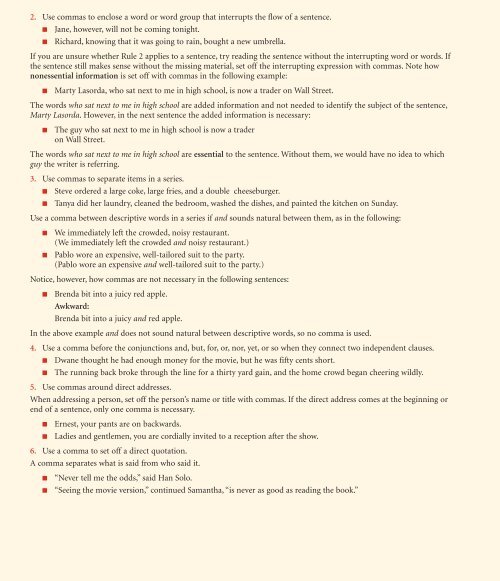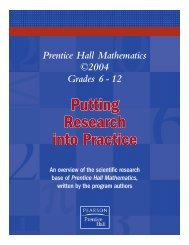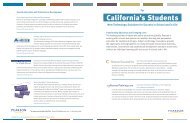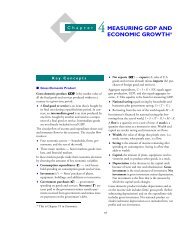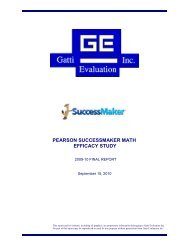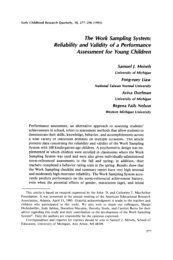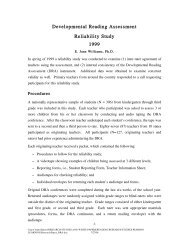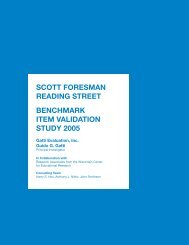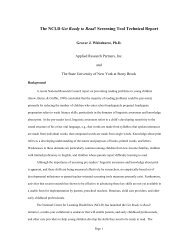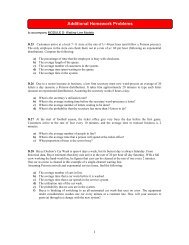Language Arts: Grammar and Punctuation Basics ... - Pearson
Language Arts: Grammar and Punctuation Basics ... - Pearson
Language Arts: Grammar and Punctuation Basics ... - Pearson
Create successful ePaper yourself
Turn your PDF publications into a flip-book with our unique Google optimized e-Paper software.
2. Use commas to enclose a word or word group that interrupts the flow of a sentence.■ Jane, however, will not be coming tonight.■ Richard, knowing that it was going to rain, bought a new umbrella.If you are unsure whether Rule 2 applies to a sentence, try reading the sentence without the interrupting word or words. Ifthe sentence still makes sense without the missing material, set off the interrupting expression with commas. Note hownonessential information is set off with commas in the following example:■Marty Lasorda, who sat next to me in high school, is now a trader on Wall Street.The words who sat next to me in high school are added information <strong>and</strong> not needed to identify the subject of the sentence,Marty Lasorda. However, in the next sentence the added information is necessary:■The guy who sat next to me in high school is now a traderon Wall Street.The words who sat next to me in high school are essential to the sentence. Without them, we would have no idea to whichguy the writer is referring.3. Use commas to separate items in a series.■ Steve ordered a large coke, large fries, <strong>and</strong> a double cheeseburger.■ Tanya did her laundry, cleaned the bedroom, washed the dishes, <strong>and</strong> painted the kitchen on Sunday.Use a comma between descriptive words in a series if <strong>and</strong> sounds natural between them, as in the following:■■We immediately left the crowded, noisy restaurant.(We immediately left the crowded <strong>and</strong> noisy restaurant.)Pablo wore an expensive, well-tailored suit to the party.(Pablo wore an expensive <strong>and</strong> well-tailored suit to the party.)Notice, however, how commas are not necessary in the following sentences:■Brenda bit into a juicy red apple.Awkward:Brenda bit into a juicy <strong>and</strong> red apple.In the above example <strong>and</strong> does not sound natural between descriptive words, so no comma is used.4. Use a comma before the conjunctions <strong>and</strong>, but, for, or, nor, yet, or so when they connect two independent clauses.■ Dwane thought he had enough money for the movie, but he was fifty cents short.■ The running back broke through the line for a thirty yard gain, <strong>and</strong> the home crowd began cheering wildly.5. Use commas around direct addresses.When addressing a person, set off the person’s name or title with commas. If the direct address comes at the beginning orend of a sentence, only one comma is necessary.■■Ernest, your pants are on backwards.Ladies <strong>and</strong> gentlemen, you are cordially invited to a reception after the show.6. Use a comma to set off a direct quotation.A comma separates what is said from who said it.■■“Never tell me the odds,” said Han Solo.“Seeing the movie version,” continued Samantha, “is never as good as reading the book.”


